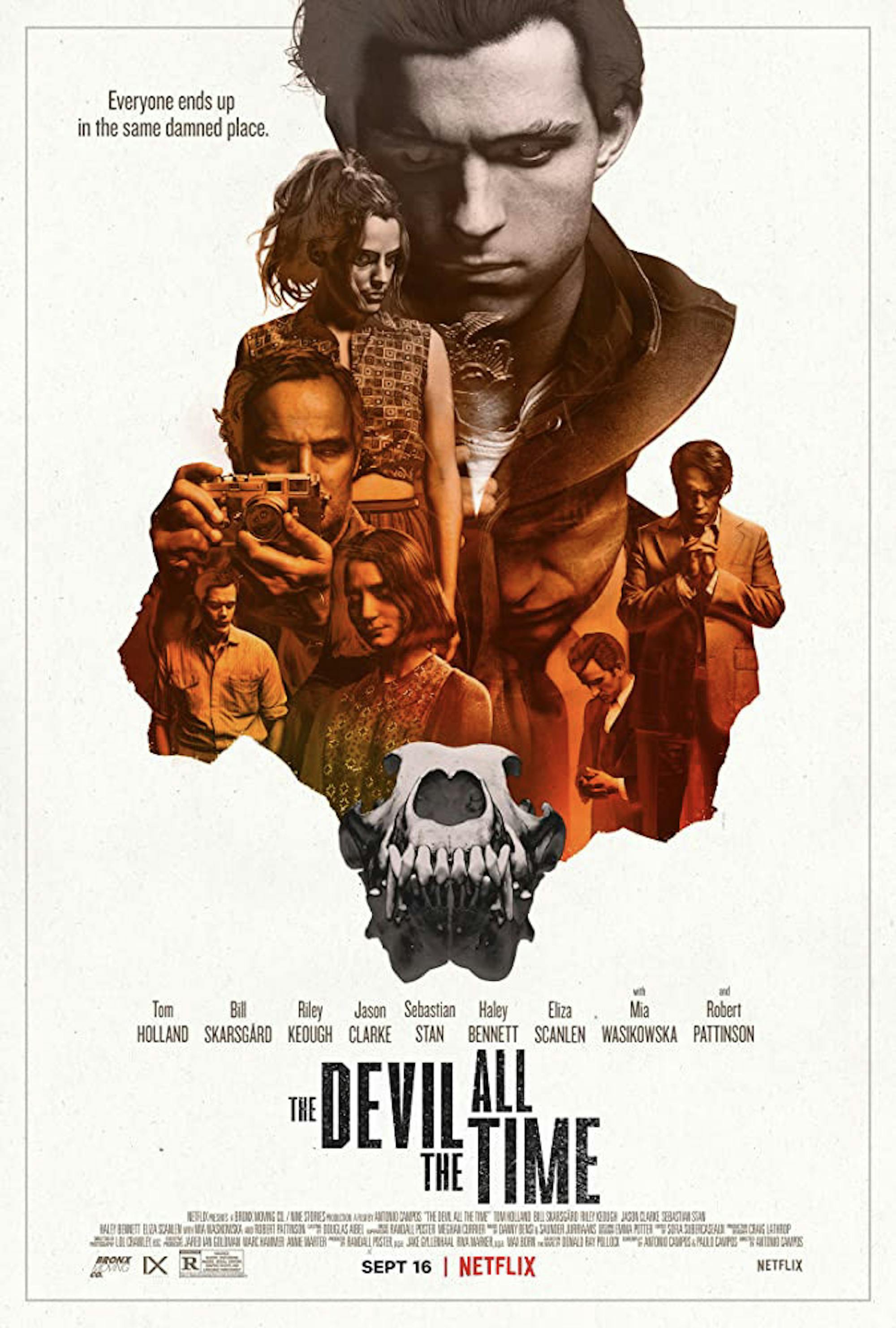With the temporary closure of in-person theaters, Netflix has released a slew of original content over the past few (endless) months: most recently, Antonio Campos’ thriller “The Devil All the Time" (2020). The film, which stars big-name actors Tom Holland, Robert Pattinson, Mia Wasikowska and Bill Skarsgård, travels throughout space and time as it tells an intertwining ballad of unholy human evils. With each story comes tales of woe, death, terror, religious ecstasy and, above all, sin. The stories are all connected, and throughout the film the overarching narrator, voiced by the source novel’s author Donald Ray Pollock, comments on each one, giving intimate insight into the connections and characters. While the film is effective at portraying sin, it falls flat in its attempts to delve into the psyche and meaning within each sinful act. Despite the aching depictions of hopelessness and melancholy, the heavy-handedness of the theme detracts from the film’s message and its attempts at philosophical introspection.
The film is dark and dim, with themes of turmoil and human destruction constantly being emphasized.The narrator opens the film by pointing out how the two main towns of Knockemstiff, Ohio — the name a not-so-subtle nod to the town’s violence — and Coal Creek, W. Va. blend into the backdrop of rural America. The evil that is portrayed is not some special specific evil but is instead a universal human one. The two towns are like any other town; the people there are just like any other people. The idea that humans are inherently evil comes up time and time again throughout the film.
Acts of violence and depravity are the checkpoints throughout this film, yet the different situations shown are what makes the film entertaining and exciting. Whether it is an act of pure psychopathy, an act of revenge, a religious lament or an attempt at salvation, each fold in the story is tense and interesting. Furthermore, the violence is cyclic. It builds upon itself and spreads, it trickles downinto following generations.
While the connection and the thrills are tragically portrayed, much of the film is very shallow, and never manages to delve into the philosophical explanations for the immorality seen in the film. Ultimately, the main ideas are interesting enough to pull you in, but are hollowed out and remain greatly unexplored by the film’s end.
Cinematographically, "The Devil All The Time" is light and clear, and showcases vivid greens and deep browns; juxtapositions of light imagery and dark motivic content are common. The music included also added much to the film; the soundtrack, primarily consisting of folk and country music, added so much life to each scene. The costumes and hair were great at bringing the time period and the stories to life in subtle ways that made the characters feel very lived-in.
The film has a star-studded cast who all give solid performances. Though the film is set in the American country, a number of members of the cast are European or Australian — the accents, however, are wonderfully believable. Robert Pattinson in particular, who plays a character from Tennessee, gives an unhinged performance that has sparked dense twitter discourse over whether his accent is absurd and crazy or assured and fantastic.
Overall, “The Devil All the Time” is an entertaining watch. Despite a semi-hollow tone and a mostly unsuccessful grasp at depth, it is exciting and full of thrills, twists and turns.






